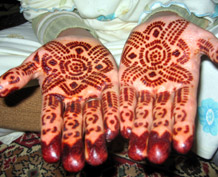The Art of Henna, A Moroccan Tradition
March 2nd, 2009
Under the shade of an olive tree, sipping on freshly squeezed orange juice you just bought from a vendor at the street corner, you sit in comfortable silence with your new Moroccan friend Amine, who has been kind enough to show you around his beloved Marrakesh. Yesterday, Amine…


